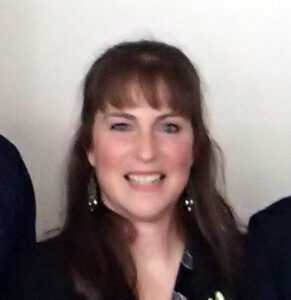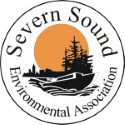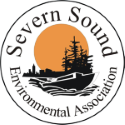Stream Invertebrates
Tributary Ecosystem Health Monitoring Program
Stream benthic macroinvertebrate (BMI’s) community composition has long been used to assess stream quality in the Severn Sound watershed. The Tributary Ecosystem Health Monitoring Program (TEHMP) has been ongoing since 1996 and utilizes standard qualitative and quantitative biomonitoring protocols within the tributaries of Severn Sound . The methods provide SSEA with a better understanding of presence and absence of species throughout the watershed, community densities, and significant trends over time, allowing us to evaluate tributary water quality.
What is Biomonitoring?
Biological monitoring or biomonitoring is the systematic use of living organisms and their responses to assess the aquatic environment. SSEA uses BMI’s as the biological indicator of water quality in tributaries.
BMI’s, or water bugs, are aquatic bottom dwelling organisms without a backbone that live in the bottom sediments of tributaries. . They include such things as various larval stages of dragonflies, damselflies, mosquitoes, mayflies, and black flies, along with crayfish, snails, clams and aquatic worms. BMI’s play an important role in decomposing organic matter, moving nutrients through the food web and providing a food source for fish .
Why does SSEA monitor benthic invertebrates?
Water quality indicators based on chemical or bacterial samples show conditions at a snapshot in time and do not always give a holistic picture of stream health. . Stream quality can change rapidly such as through pollution discharges or physical habitat destruction and if they are not ongoing, these changes may go undetected by intermittent chemistry sampling. BMI’s are useful indicators of water quality because they live in the stream year-round or over multiple years within a relatively small habitat range, and they have varying tolerances to pollution. The presence or absence of different types of BMI’s at a monitoring station can provide valuable information about tributary’s health over time.
Changes in water quality lead to changes in the community composition , number of species present, and density. Polluted areas often only support a few pollution tolerant species while a diverse community with more pollution intolerant species would be found in unimpaired areas. This biomonitoring tool enables SSEA to locate where stewardship activities may be needed or areas to protect within the watershed.
Where does SSEA monitor benthos in the watershed?
The SSEA monitors 24 long-term stations biennially, representing 10 subwatersheds ( Avon River, Coldwater River, Copeland Creek, Hogg Creek, North River, Silver Creek, Sturgeon River, Wye River, Bass Lake and Baxter Lake) Additional sites are monitored seasonally depending on projects within the watershed.
How does SSEA monitor benthos in the Severn Sound area?
Two sampling protocols are used for the collection of benthic invertebrates. The first is a qualitative method that involves two people conducting a 15 minute search of all habitats in a 15 meter stream reach using a hand sieve and forceps . Habitats included sand, silt, gravel, rip-rap, large rocks, logs and vegetation. This method gives us information on the diversity of BMI’s present at a site.
The second is a quantitative method using a t-sampler focusing on the riffle area of a stream. The open end of the sampler is placed into the current, the streambed substrate inside the t-sampler is agitated and the flow carries any invertebrates through the net and into the catch bottle. This method was selected to determine the density and diversity of BMI’s within the set area of the t-sampler. It provides standardized comparisons between samples and sites and will show community changes over time.
Contents of the sieve or catch bottle are placed in a tray and all specimens are picked and preserved. SSEA conducts all sample identification in house, and samples are identified to family level..
For more information on TEHMP, contact:
Paula Madill, Ecosystem Technologist
pmadill@severnsound.ca
705-534-7283 ext. 203


